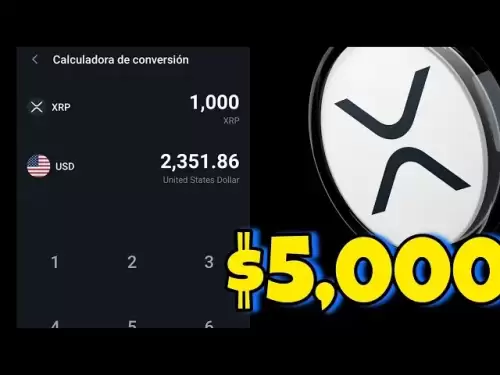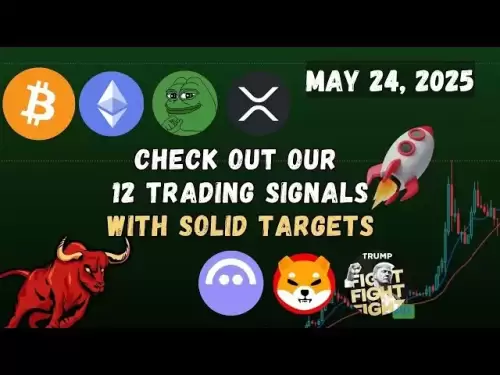-
 Bitcoin
Bitcoin $108,786.2417
0.36% -
 Ethereum
Ethereum $2,537.2420
0.02% -
 Tether USDt
Tether USDt $1.0003
0.03% -
 XRP
XRP $2.3426
0.64% -
 BNB
BNB $671.7503
1.44% -
 Solana
Solana $177.2714
0.09% -
 USDC
USDC $0.9999
0.00% -
 Dogecoin
Dogecoin $0.2268
-1.58% -
 Cardano
Cardano $0.7504
-1.58% -
 TRON
TRON $0.2708
0.18% -
 Sui
Sui $3.6228
-0.77% -
 Hyperliquid
Hyperliquid $35.5085
5.11% -
 Chainlink
Chainlink $15.3923
-2.69% -
 Avalanche
Avalanche $22.9511
-3.07% -
 Stellar
Stellar $0.2870
-0.88% -
 Shiba Inu
Shiba Inu $0.0...01440
-0.89% -
 Bitcoin Cash
Bitcoin Cash $424.9515
-2.22% -
 UNUS SED LEO
UNUS SED LEO $8.8125
0.28% -
 Hedera
Hedera $0.1900
-2.13% -
 Toncoin
Toncoin $3.0368
0.32% -
 Monero
Monero $403.4534
1.47% -
 Litecoin
Litecoin $96.3180
-0.69% -
 Polkadot
Polkadot $4.5720
-1.47% -
 Bitget Token
Bitget Token $5.6139
0.60% -
 Pepe
Pepe $0.0...01384
-4.54% -
 Pi
Pi $0.7814
2.81% -
 Dai
Dai $1.0000
0.00% -
 Ethena USDe
Ethena USDe $1.0006
-0.01% -
 Aave
Aave $263.4311
1.83% -
 Uniswap
Uniswap $6.1670
1.33%
How to use MA long-term moving average? How to refer to medium and long-term investment?
Long-term moving averages like 50-day EMA and 200-day SMA help identify trends and potential entry/exit points for medium and long-term crypto investments.
May 24, 2025 at 11:08 pm

Introduction to MA Long-Term Moving Average
The Moving Average (MA) is a widely used technical analysis tool in the cryptocurrency market. It helps traders and investors smooth out price data to identify trends over a specified period. When we talk about the MA long-term moving average, we typically refer to moving averages that span 50 days or more. This tool is particularly useful for medium and long-term investors who aim to ride major trends rather than focus on short-term fluctuations.
In this article, we will explore how to use the MA long-term moving average effectively for medium and long-term investments in the cryptocurrency market. We will delve into different types of moving averages, how to set them up, and how to interpret them to make informed investment decisions.
Types of Long-Term Moving Averages
There are several types of moving averages that can be classified as long-term, each with its own characteristics and applications:
Simple Moving Average (SMA): The SMA calculates the average price of a cryptocurrency over a specific period. For long-term analysis, a 200-day SMA is often used. It provides a clear view of the long-term trend but can be slow to react to new price changes.
Exponential Moving Average (EMA): The EMA gives more weight to recent prices, making it more responsive to new information than the SMA. A common long-term EMA used in cryptocurrency trading is the 50-day EMA, though longer periods like 100 or 200 days can also be employed.
Weighted Moving Average (WMA): The WMA assigns different weights to prices within the period, with the most recent prices having the highest weight. It is less common in long-term analysis but can be useful for those who want to emphasize recent trends.
Setting Up Long-Term Moving Averages
To effectively use long-term moving averages for your medium and long-term investments, you need to set them up correctly in your trading platform. Here's how you can do it:
Choose a Trading Platform: Ensure that your chosen platform supports the addition of moving averages to your charts. Popular platforms like TradingView, Binance, and Coinbase Pro offer this feature.
Add Moving Averages to Your Chart:
- Open your preferred trading chart for the cryptocurrency you're analyzing.
- Look for an indicator or drawing tool section in your platform.
- Select "Moving Average" or a similar option.
- Choose the type of moving average you want to use (SMA, EMA, or WMA).
- Set the period to a long-term value, such as 50, 100, or 200 days.
Customize Your Settings: You can usually adjust the color, line thickness, and other visual aspects of the moving average to make it stand out on your chart.
Interpreting Long-Term Moving Averages
Once your long-term moving averages are set up, the next step is to interpret them to guide your investment decisions. Here's how you can do that:
Trend Identification: The primary use of long-term moving averages is to identify the overall trend of a cryptocurrency. If the price is consistently above the moving average, it indicates an uptrend. Conversely, if the price is consistently below the moving average, it signals a downtrend.
Crossovers: Pay attention to when the price crosses the moving average. A golden cross occurs when a shorter-term moving average (like a 50-day EMA) crosses above a longer-term moving average (like a 200-day SMA), indicating potential bullish momentum. A death cross is the opposite, where the shorter-term moving average crosses below the longer-term moving average, suggesting bearish momentum.
Support and Resistance: Long-term moving averages can act as dynamic levels of support and resistance. In an uptrend, the moving average can serve as a support level, where the price might bounce back up. In a downtrend, it can act as a resistance level, where the price might struggle to break through.
Using Long-Term Moving Averages for Medium and Long-Term Investments
When it comes to medium and long-term investments, using long-term moving averages can help you make more informed decisions. Here's how:
Entry Points: Use long-term moving averages to identify potential entry points. For instance, if you're considering investing in a cryptocurrency, look for moments when the price is above a long-term moving average and showing signs of a sustained uptrend.
Exit Points: Similarly, long-term moving averages can help you decide when to exit a position. If the price falls below a long-term moving average and shows signs of a sustained downtrend, it might be a signal to sell or reduce your position.
Portfolio Management: Long-term moving averages can also aid in managing your overall portfolio. By tracking the long-term trends of different cryptocurrencies, you can adjust your holdings to align with the most promising trends.
Risk Management: Using long-term moving averages can help you manage risk by providing a clearer picture of the market's direction. This can prevent you from making impulsive decisions based on short-term volatility.
Combining Long-Term Moving Averages with Other Indicators
While long-term moving averages are powerful on their own, combining them with other technical indicators can enhance your analysis. Here are some common combinations:
Moving Average Convergence Divergence (MACD): The MACD is a trend-following momentum indicator that shows the relationship between two moving averages of a cryptocurrency's price. Combining it with long-term moving averages can help confirm trend signals and identify potential reversals.
Relative Strength Index (RSI): The RSI is a momentum oscillator that measures the speed and change of price movements. When used with long-term moving averages, it can help identify overbought or oversold conditions, which can be useful for timing your entry and exit points.
Bollinger Bands: Bollinger Bands consist of a middle band (usually a 20-day SMA) and two outer bands that are standard deviations away from the middle band. Combining them with long-term moving averages can help you assess volatility and potential price breakouts.
Frequently Asked Questions
Q1: Can long-term moving averages be used for short-term trading?
While long-term moving averages are primarily designed for medium and long-term investments, they can still be used in short-term trading strategies. However, they are less effective for short-term trading due to their slow response to price changes. For short-term trading, shorter-term moving averages like 10-day or 20-day SMAs or EMAs are more suitable.
Q2: How do I choose the right period for a long-term moving average?
The choice of period for a long-term moving average depends on your investment horizon and the specific cryptocurrency you're analyzing. Common long-term periods include 50, 100, and 200 days. It's often helpful to experiment with different periods and see which one aligns best with your investment strategy and the market conditions.
Q3: Can long-term moving averages predict cryptocurrency prices?
Long-term moving averages are not predictive tools but rather trend-following indicators. They help you identify the direction of the trend and potential support and resistance levels. While they can provide insights into future price movements based on historical data, they cannot predict prices with certainty.
Q4: Are long-term moving averages effective during high volatility periods?
Long-term moving averages can be less effective during periods of high volatility because they smooth out price data over a longer period. However, they can still be useful for identifying the overall trend amidst the noise. Combining long-term moving averages with other indicators, such as the RSI or Bollinger Bands, can help you better navigate volatile markets.
Disclaimer:info@kdj.com
The information provided is not trading advice. kdj.com does not assume any responsibility for any investments made based on the information provided in this article. Cryptocurrencies are highly volatile and it is highly recommended that you invest with caution after thorough research!
If you believe that the content used on this website infringes your copyright, please contact us immediately (info@kdj.com) and we will delete it promptly.
- $120K-$130K
- 2025-05-25 05:40:13
- Trump diner at exclusive private dinner says 'worst food ever' was served to guests amid ‘orgy of corruption’
- 2025-05-25 05:40:13
- title: XRP Price Today: Calm Before the Storm?
- 2025-05-25 05:35:14
- Kaspa’s High Hopes & Major ETH Selloffs: Cold Wallet at $0.00788 Is Quietly Becoming 2025’s Breakout Crypto!
- 2025-05-25 05:35:14
- Remittix (RTX) Emerges From the Shadows as Solana and XRP Lose Steam
- 2025-05-25 05:30:13
- Ruvi AI (RUV), trading at $0.015, Combines Blockchain and AI for Real-World Applications
- 2025-05-25 05:30:13
Related knowledge
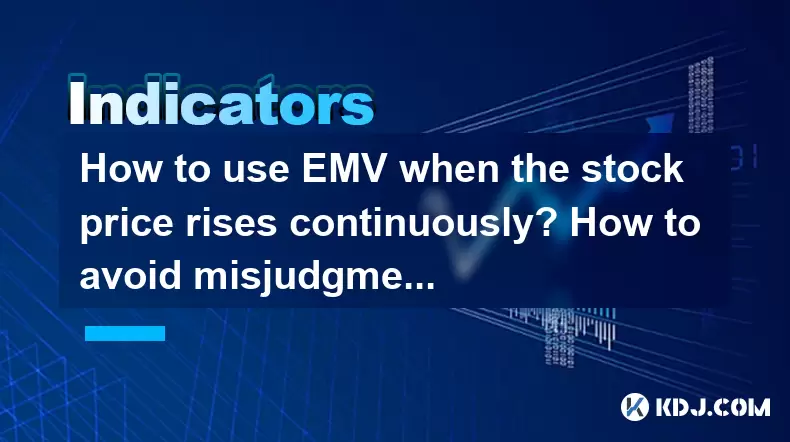
How to use EMV when the stock price rises continuously? How to avoid misjudgment in extreme market conditions?
May 23,2025 at 07:29pm
In the dynamic world of cryptocurrency trading, the Exponential Moving Average (EMA) is a powerful tool that traders use to make informed decisions, especially during periods of continuous stock price rises. Understanding how to effectively use EMAs and avoiding misjudgment in extreme market conditions are crucial skills for any crypto trader. This arti...
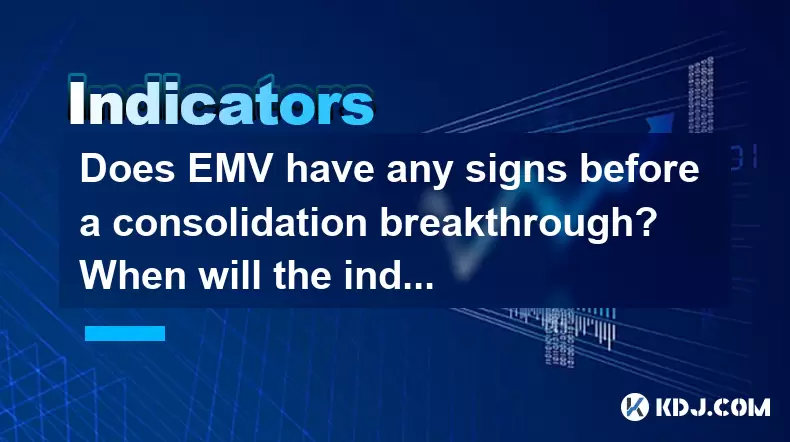
Does EMV have any signs before a consolidation breakthrough? When will the indicator give an early warning?
May 23,2025 at 06:42pm
Does EMV have any signs before a consolidation breakthrough? When will the indicator give an early warning? The Ease of Movement Value (EMV) is a technical indicator that helps traders understand the relationship between price and volume in the cryptocurrency market. It is particularly useful for identifying potential breakouts from consolidation period...
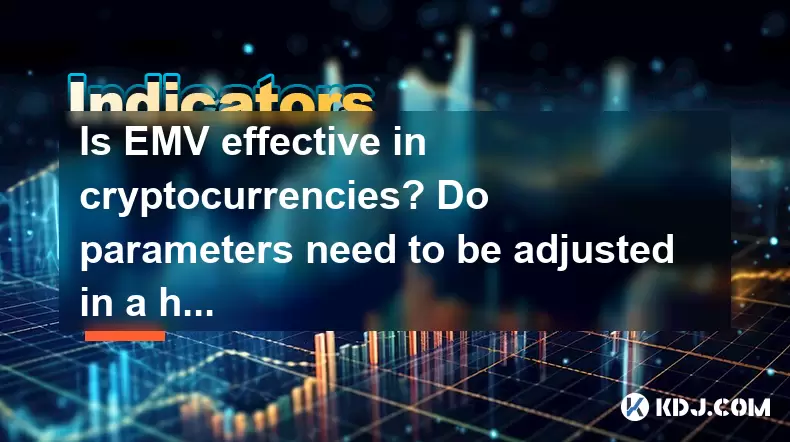
Is EMV effective in cryptocurrencies? Do parameters need to be adjusted in a high volatility environment?
May 24,2025 at 01:49am
Is EMV effective in cryptocurrencies? Do parameters need to be adjusted in a high volatility environment? EMV, or Ease of Movement Value, is a technical indicator that measures the relationship between price changes and volume. Originally developed for traditional financial markets, its application in the cryptocurrency space raises several questions ab...
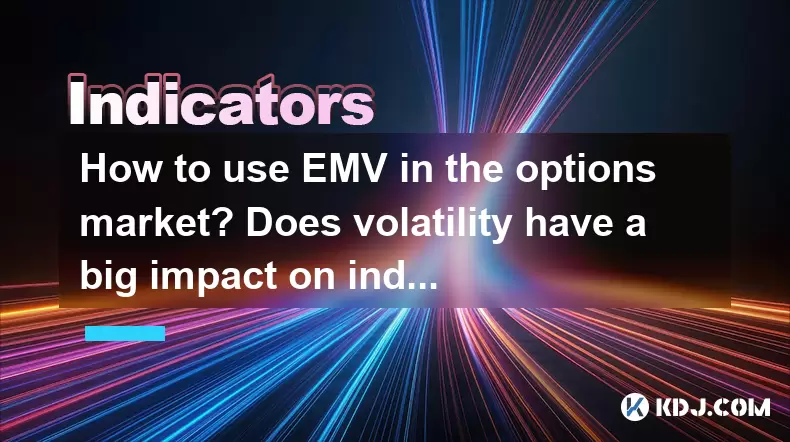
How to use EMV in the options market? Does volatility have a big impact on indicators?
May 24,2025 at 07:28am
How to Use EMV in the Options Market? Does Volatility Have a Big Impact on Indicators? The Ease of Movement Value (EMV) is a technical indicator that helps traders understand the relationship between price and volume, and it can be particularly useful in the options market. In this article, we will explore how to use EMV in the options market and examin...
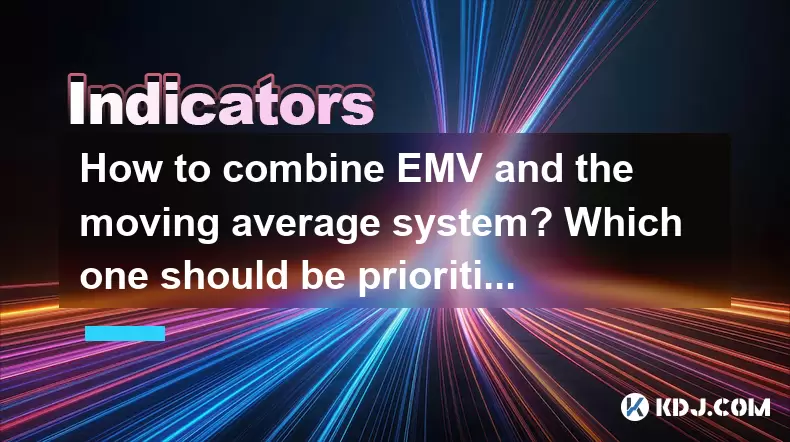
How to combine EMV and the moving average system? Which one should be prioritized when the golden cross and the dead cross appear at the same time?
May 24,2025 at 07:21pm
The combination of the Exponential Moving Average (EMA) and the moving average system is a popular strategy among cryptocurrency traders to identify potential trends and make informed trading decisions. This article will delve into how to effectively combine these tools, and what to do when the golden cross and the dead cross appear simultaneously. Unde...
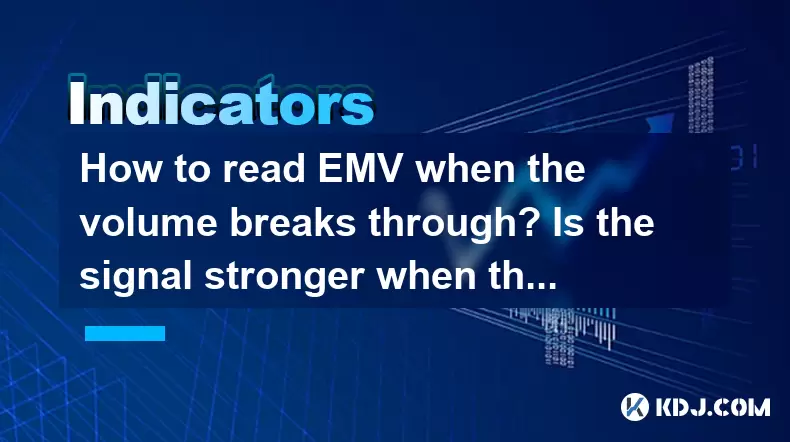
How to read EMV when the volume breaks through? Is the signal stronger when the volume and price cooperate?
May 24,2025 at 02:14pm
Understanding how to read EMV (Ease of Movement) when volume breaks through and assessing the strength of signals when volume and price cooperate are crucial skills for cryptocurrency traders. This article will delve into these topics, providing detailed insights and practical guidance. What is EMV and Its Importance in Cryptocurrency Trading?EMV, or Ea...

How to use EMV when the stock price rises continuously? How to avoid misjudgment in extreme market conditions?
May 23,2025 at 07:29pm
In the dynamic world of cryptocurrency trading, the Exponential Moving Average (EMA) is a powerful tool that traders use to make informed decisions, especially during periods of continuous stock price rises. Understanding how to effectively use EMAs and avoiding misjudgment in extreme market conditions are crucial skills for any crypto trader. This arti...

Does EMV have any signs before a consolidation breakthrough? When will the indicator give an early warning?
May 23,2025 at 06:42pm
Does EMV have any signs before a consolidation breakthrough? When will the indicator give an early warning? The Ease of Movement Value (EMV) is a technical indicator that helps traders understand the relationship between price and volume in the cryptocurrency market. It is particularly useful for identifying potential breakouts from consolidation period...

Is EMV effective in cryptocurrencies? Do parameters need to be adjusted in a high volatility environment?
May 24,2025 at 01:49am
Is EMV effective in cryptocurrencies? Do parameters need to be adjusted in a high volatility environment? EMV, or Ease of Movement Value, is a technical indicator that measures the relationship between price changes and volume. Originally developed for traditional financial markets, its application in the cryptocurrency space raises several questions ab...

How to use EMV in the options market? Does volatility have a big impact on indicators?
May 24,2025 at 07:28am
How to Use EMV in the Options Market? Does Volatility Have a Big Impact on Indicators? The Ease of Movement Value (EMV) is a technical indicator that helps traders understand the relationship between price and volume, and it can be particularly useful in the options market. In this article, we will explore how to use EMV in the options market and examin...

How to combine EMV and the moving average system? Which one should be prioritized when the golden cross and the dead cross appear at the same time?
May 24,2025 at 07:21pm
The combination of the Exponential Moving Average (EMA) and the moving average system is a popular strategy among cryptocurrency traders to identify potential trends and make informed trading decisions. This article will delve into how to effectively combine these tools, and what to do when the golden cross and the dead cross appear simultaneously. Unde...

How to read EMV when the volume breaks through? Is the signal stronger when the volume and price cooperate?
May 24,2025 at 02:14pm
Understanding how to read EMV (Ease of Movement) when volume breaks through and assessing the strength of signals when volume and price cooperate are crucial skills for cryptocurrency traders. This article will delve into these topics, providing detailed insights and practical guidance. What is EMV and Its Importance in Cryptocurrency Trading?EMV, or Ea...
See all articles
























